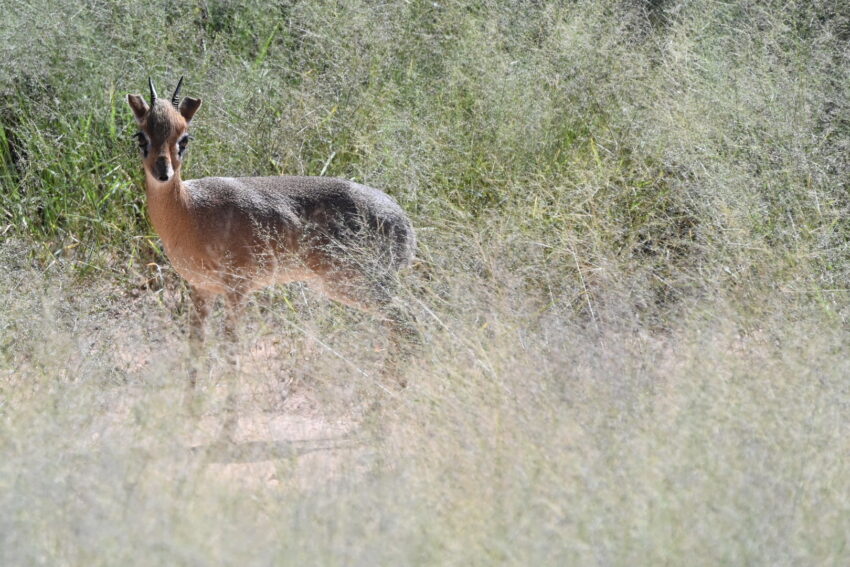This is it. The final game drive.
Or as our daughter would say – it’s the final GAME DRIVE! Da-da-da-daa! Da-da-daa-daa-daaa! Da-da-da-daa! Da-da-daa-da-daa-da!
You’ll have that stuck in your head for a while. You’re welcome.
Anyway – 5:30 am, and it’s time for our final round of dark muffins. But first, we need to get to the lodge. Which should be easy, as this is a fenced property.
Except my wife discovers three jackals outside of our cabin, including a pup. She wonders briefly if she can still make it on her own, but then one of the jackals bares its teeth at her. So we call for a night porter.
It takes a few attempts, but we eventually get through – and then a few minutes wait while the night porter springs into action. But we get there on time – and the dark muffins are waiting for us, wrapped in nocturnal splendor:
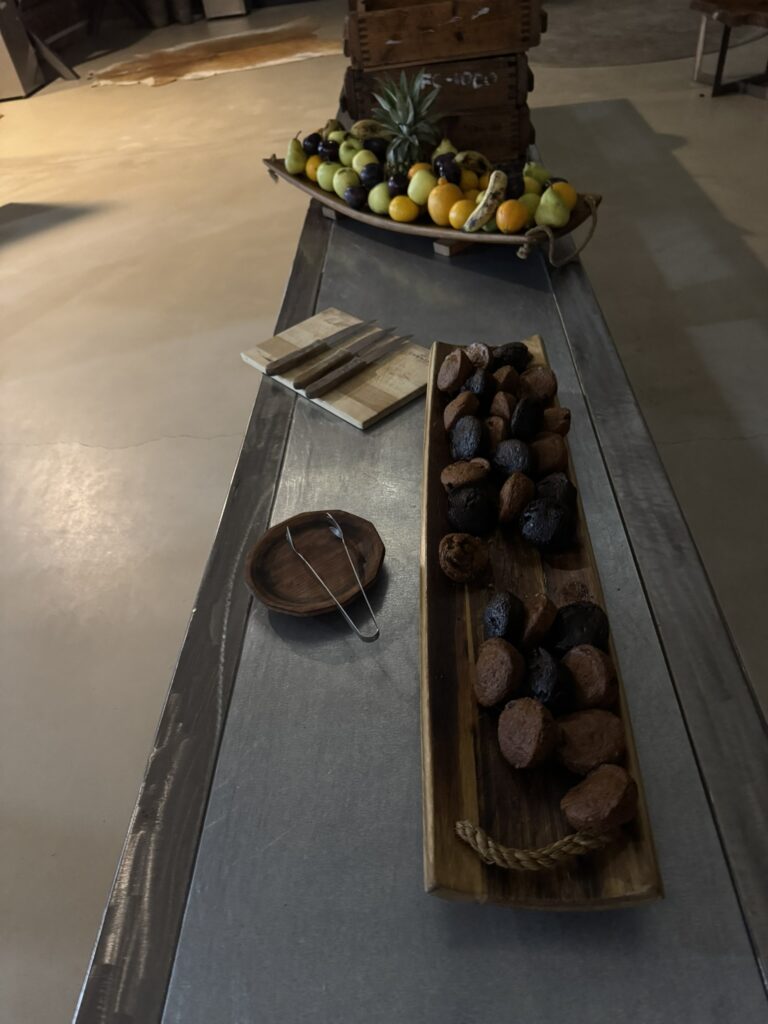
We’re here early, just in case the game drive leaves early. It doesn’t – no private car for us this morning. But they do only use outside seats, which is always appreciated. This isn’t the case for Okinjima’s more relaxed game drives, but we’re going offroad so it’s something of a safety measure.
We spot a jackal on the way out – quite possibly one which had been camping outside of our cabin:
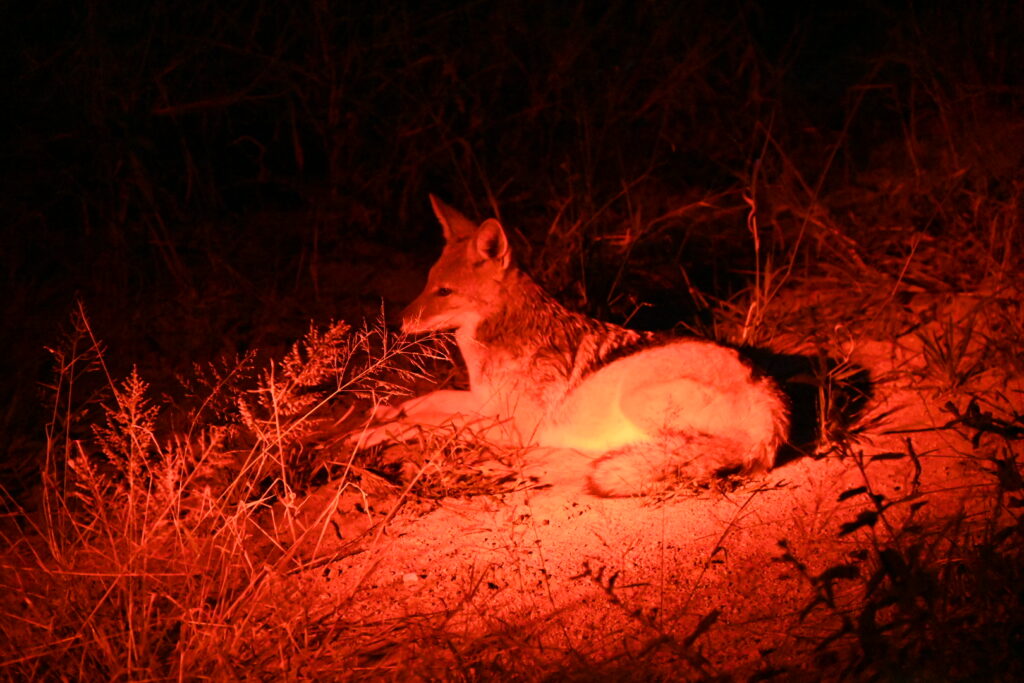
The sun starts to rise:
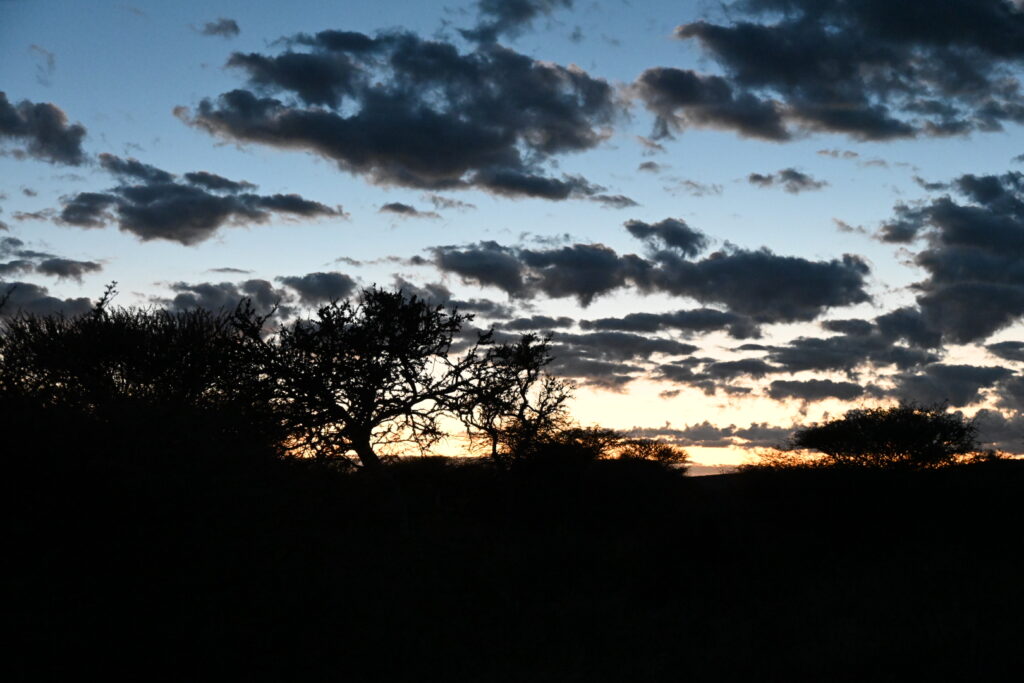
And there’s a brief pause as our guide explains the history of Okinjima and how the reserve came to be. We heard this spiel yesterday so it’s getting a bit old, but I’m sure helpful for those who haven’t yet been filled in.
Our guide Felix also explains that Okinjima uses radio collars on its leopards, which – despite the scientific context – still feels a bit like cheating.
Felix demonstrates the process with a test collar. Essentially, it involves waving a directional antennae and radio around from side to side and listening for beeps, then honing it in to determine when the beeps are the strongest. That’s the direction of the leopard.
Off we go, spotting a starling on the way:
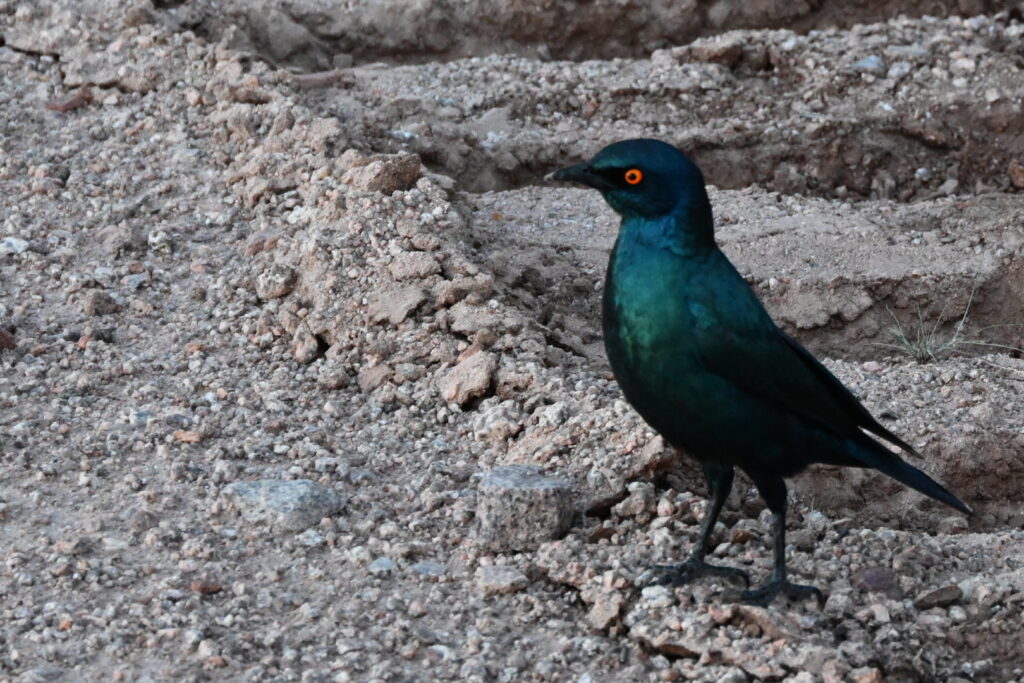
And a kudu:
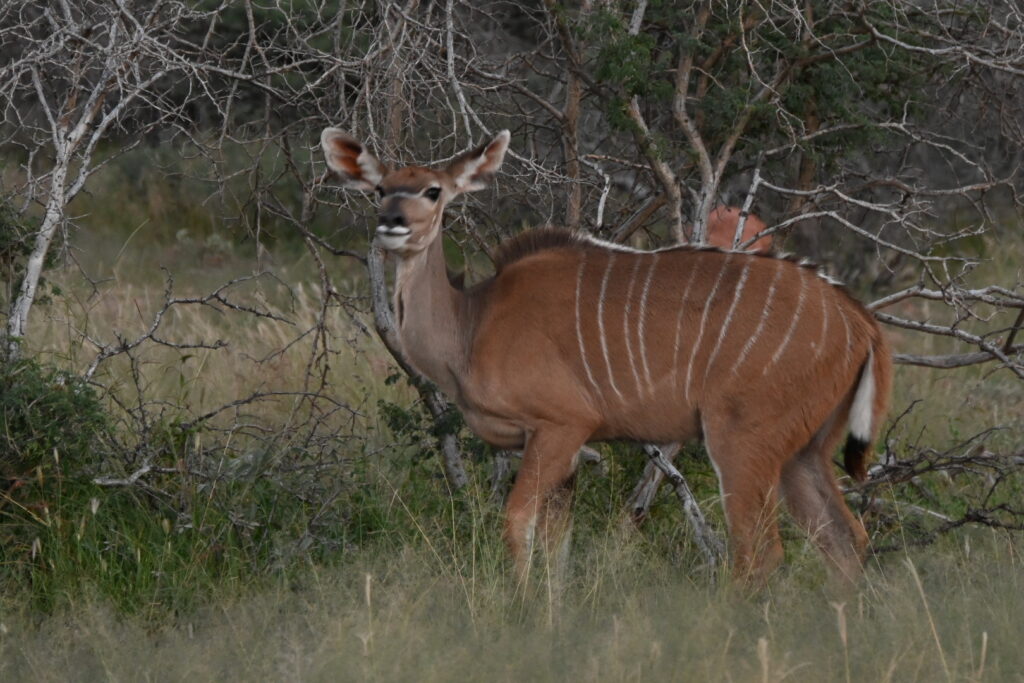
Then some plains zebra, including some juveniles:
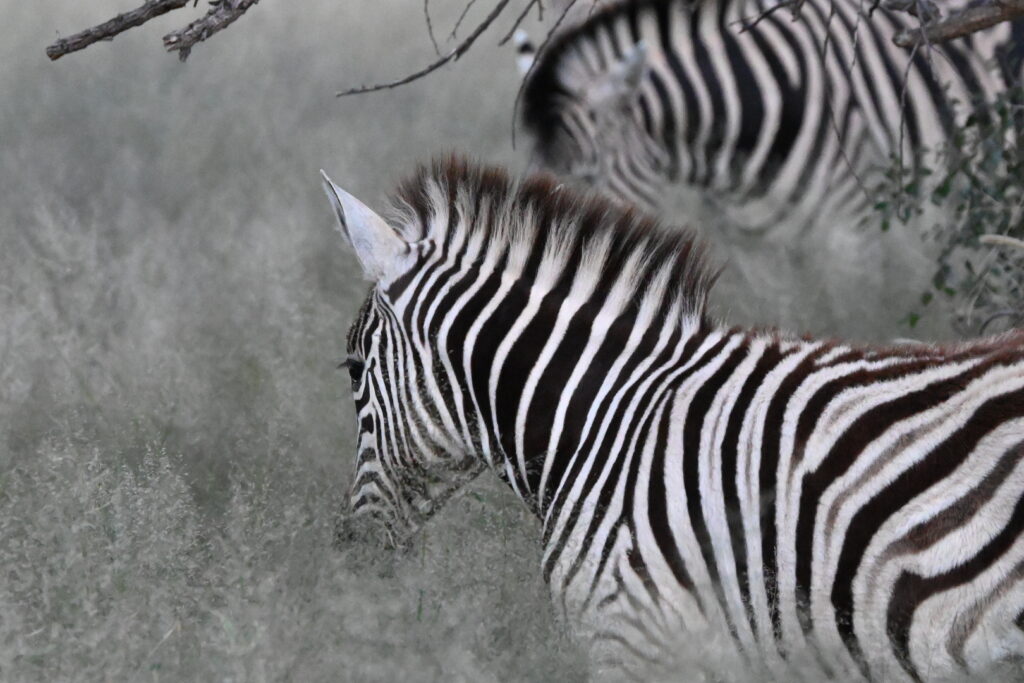
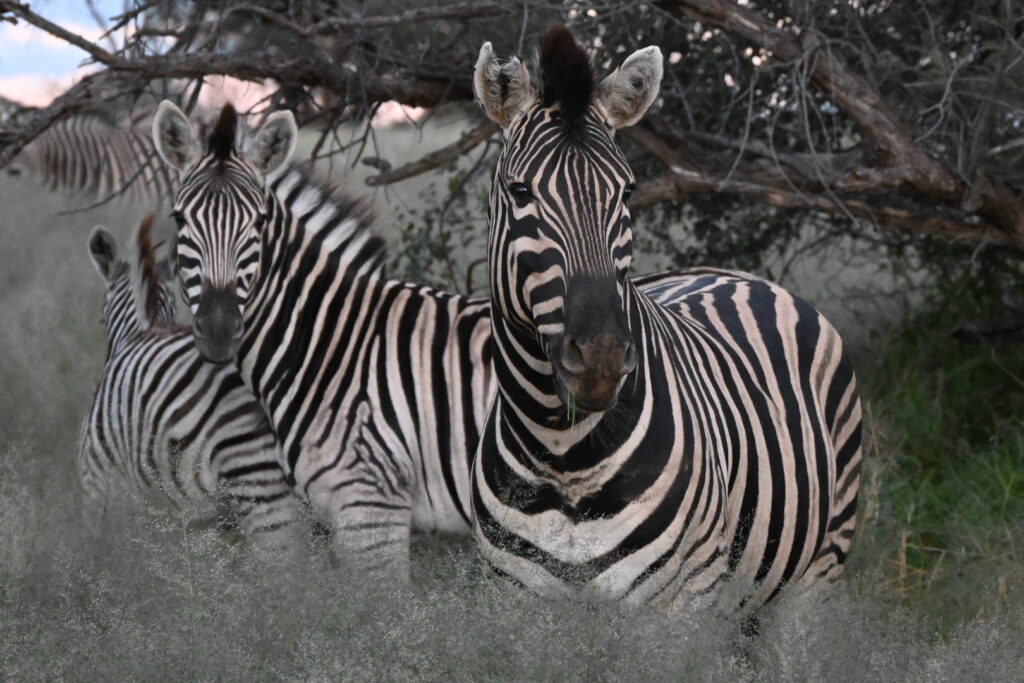
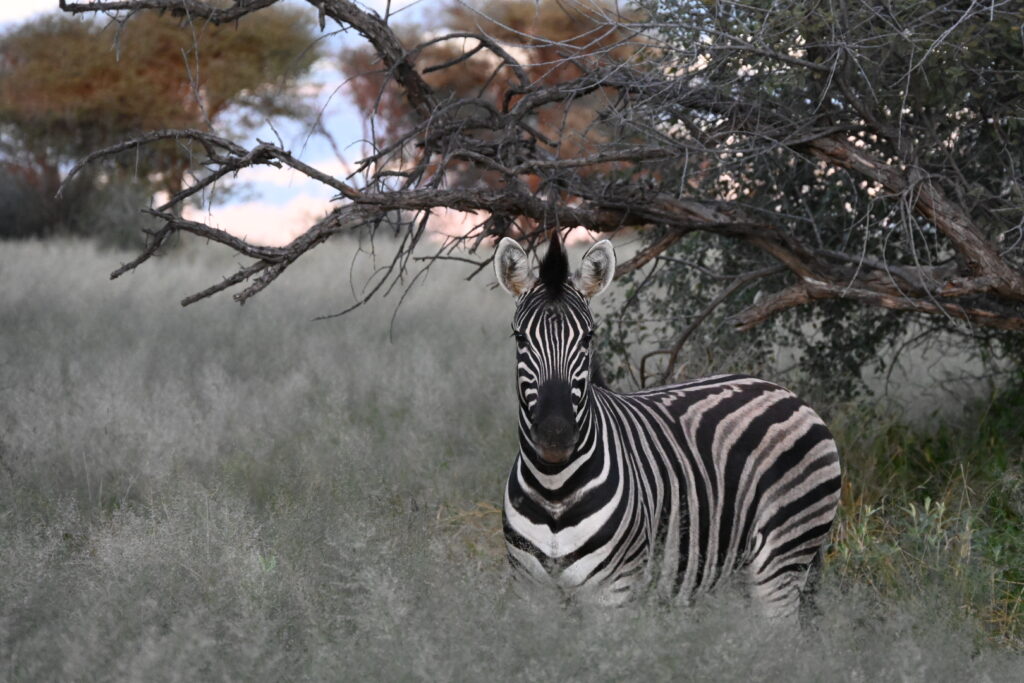
Unfortunately one of the guests is using flash photography for reasons that remain unclear – the sun is now shining, so it’s not like the flash will improve the quality of the photo. The animals don’t seem to mind and Felix hasn’t said anything, but I’m readying myself to intervene if we do come across a leopard.
Remember, kids: shockingly bright lights and apex predators don’t mix.
The sun has risen in earnest at this point:
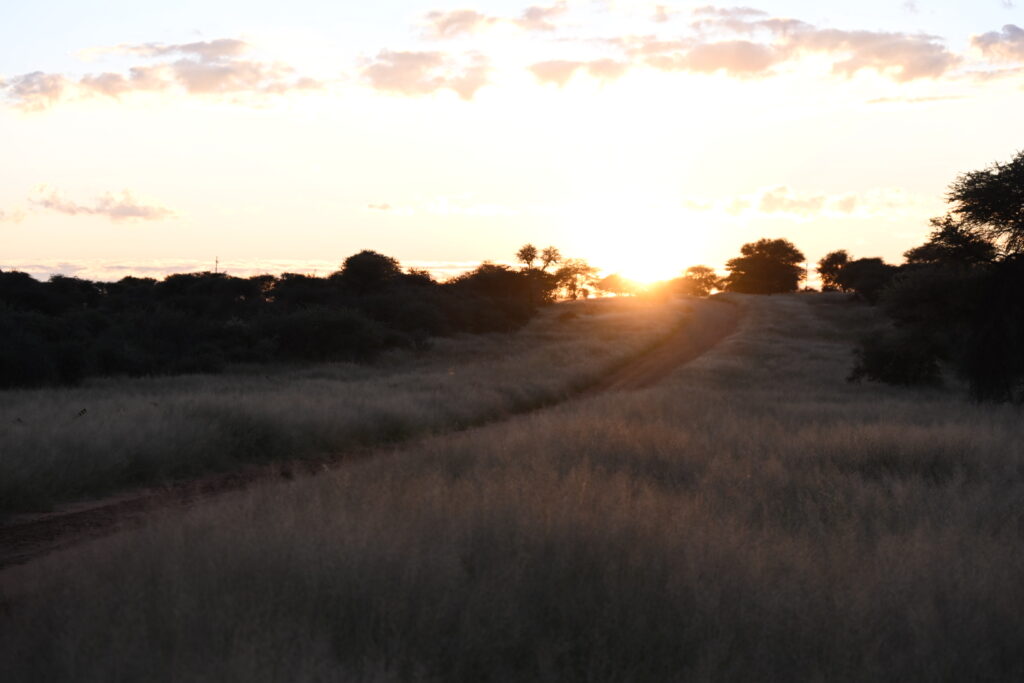
We spot some sable antelope at this stage, a new one for us:
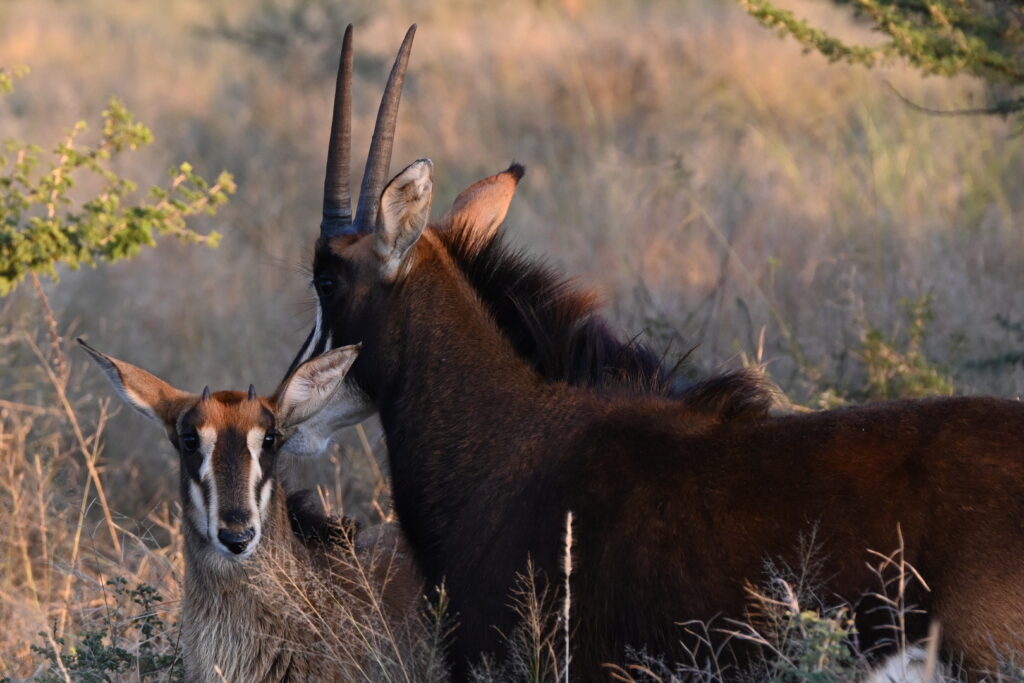
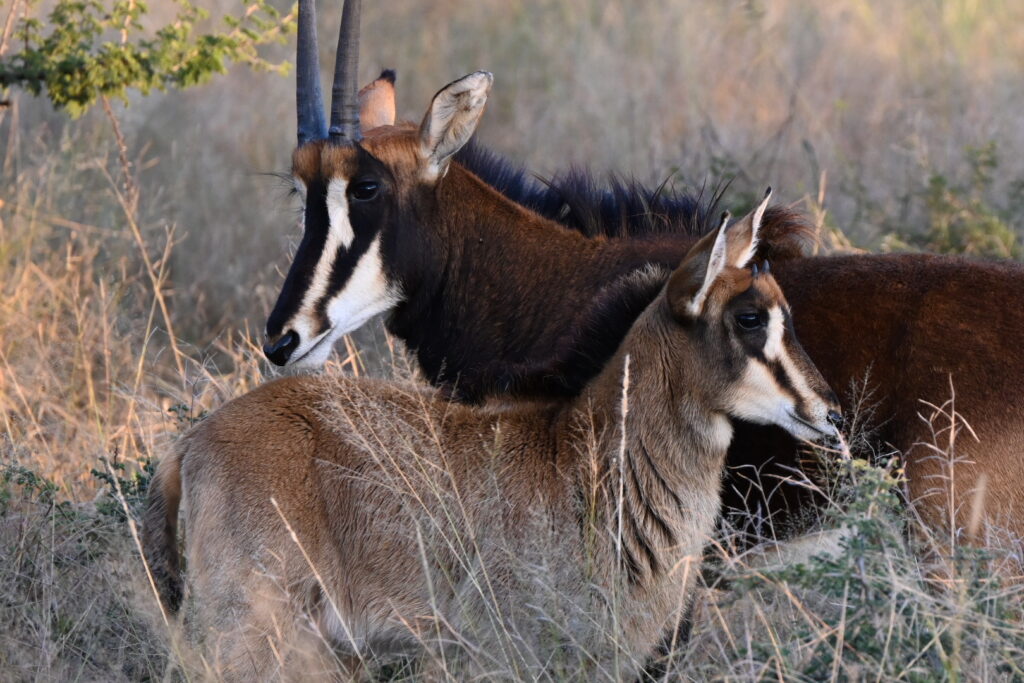
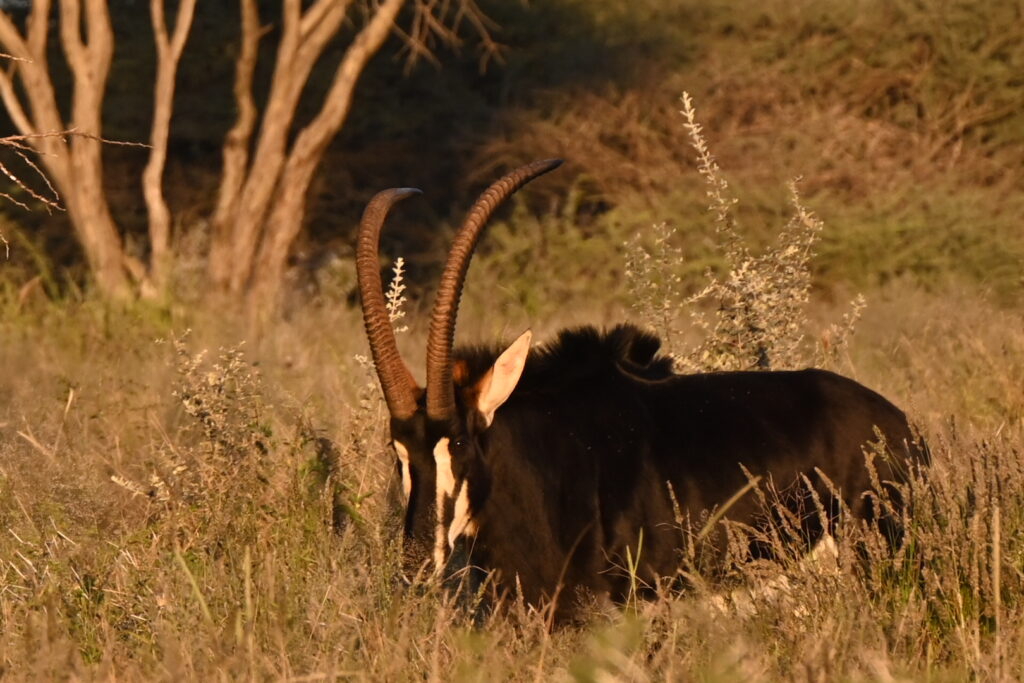
They are mostly found in southern Angola, which is why we didn’t see them in South Africa. Very photogenic!
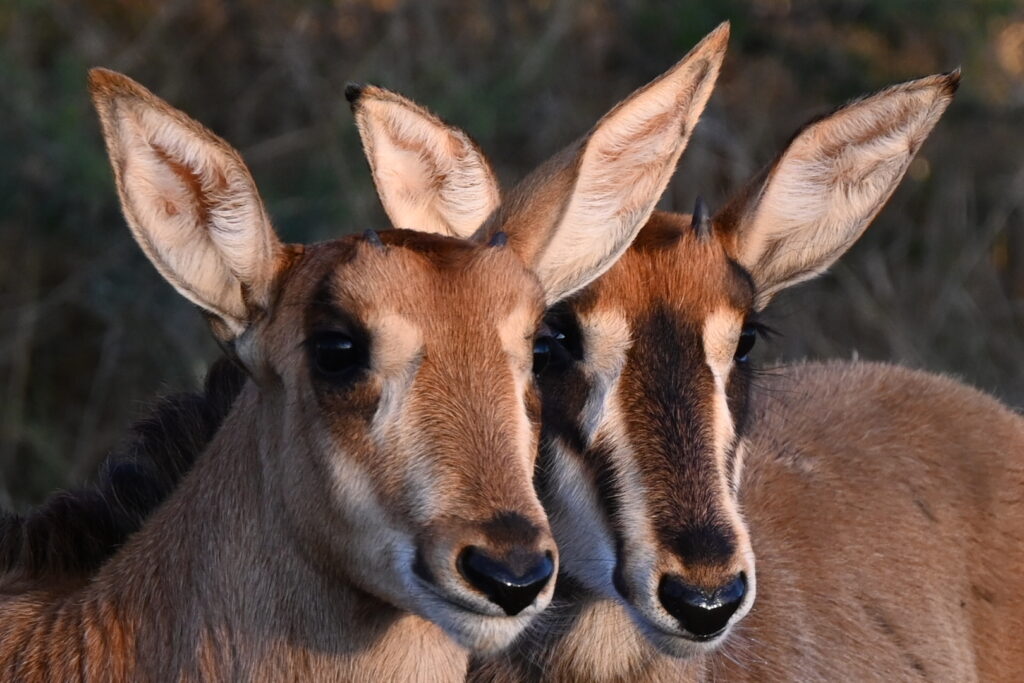
We then encounter a Grey Go-Away bird, so known for it’s distinctive “go-away” call:
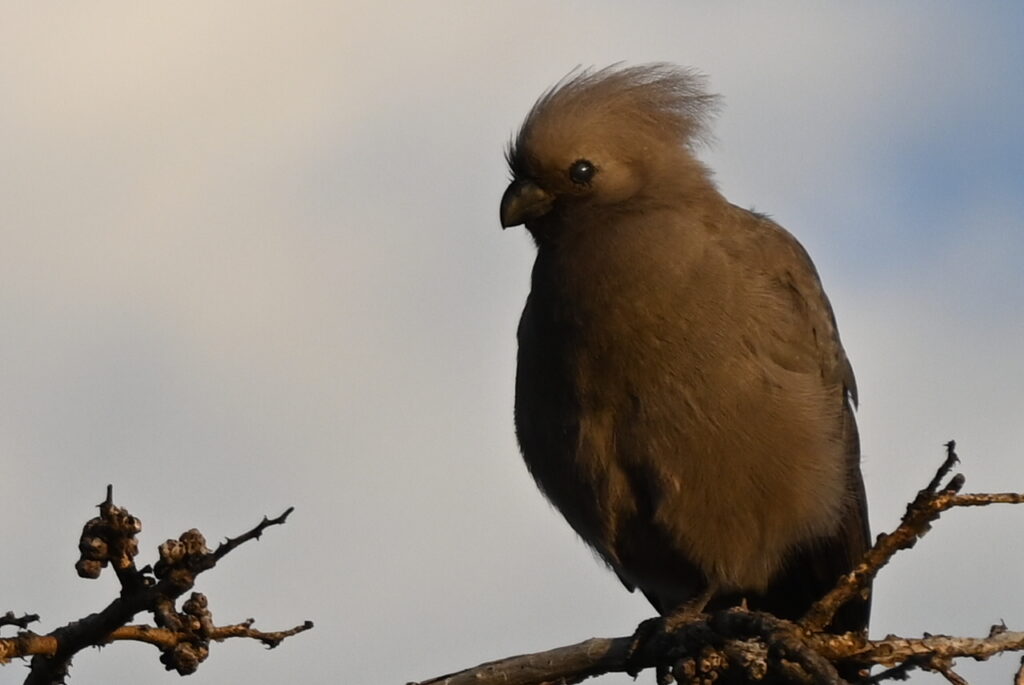
Though to me it sounds more like a chew toy being gnawed on.
And an ostrich:
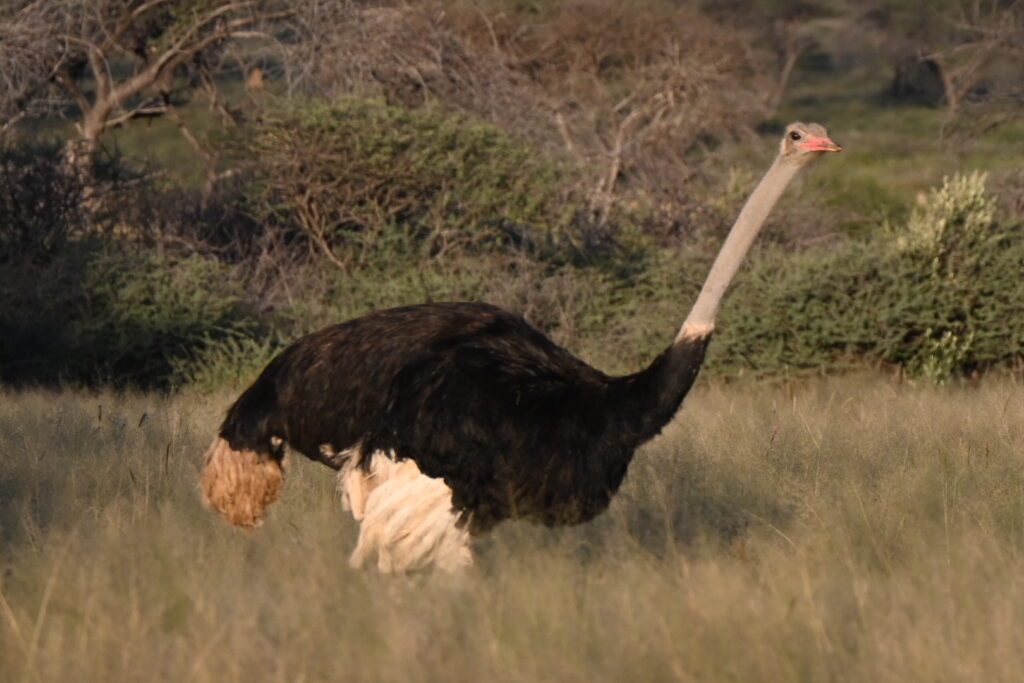
No leopards yet – though Felix is starting to get a faint signal. We only have about two hours to search, so the timeline is going to be tight.
We spot another kudu:
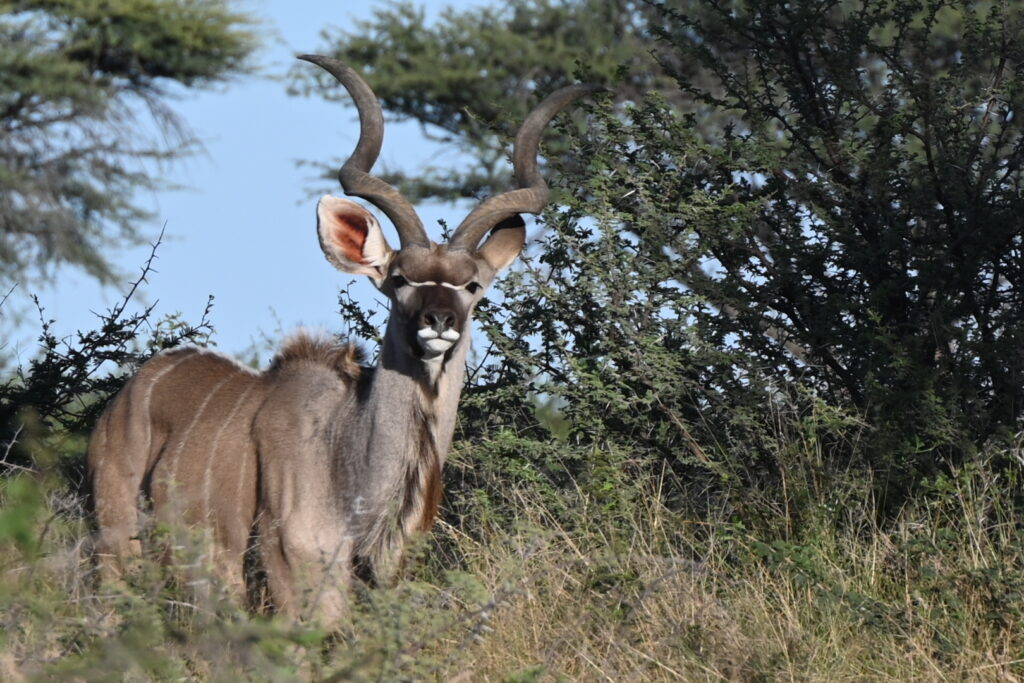
And now we have multiple leopard radio signals from which to choose. This still doesn’t mean we’re going to spot one, however – they often end up in valleys or mountains the safari vehicles can’t reach. Even with the collars, it’s only about a 50% success rate.
Then, good news – the signal is growing stronger still. We’re almost on top of her.
Bad news – she is well and truly off road.
Eventually Felix stops and points the antennae into the bush. It’s brutal – extremely thick, with uneven ground. But we’re so close – so he goes in just a few more feet.
And there she is – Saskia, a 16-year-old grandmother leopard:
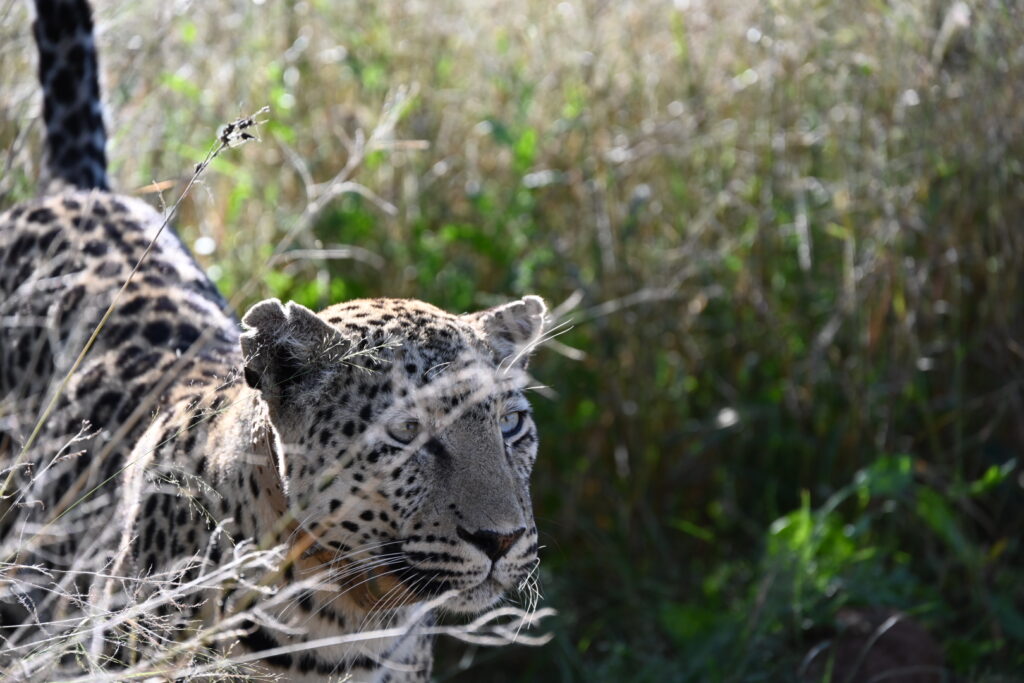
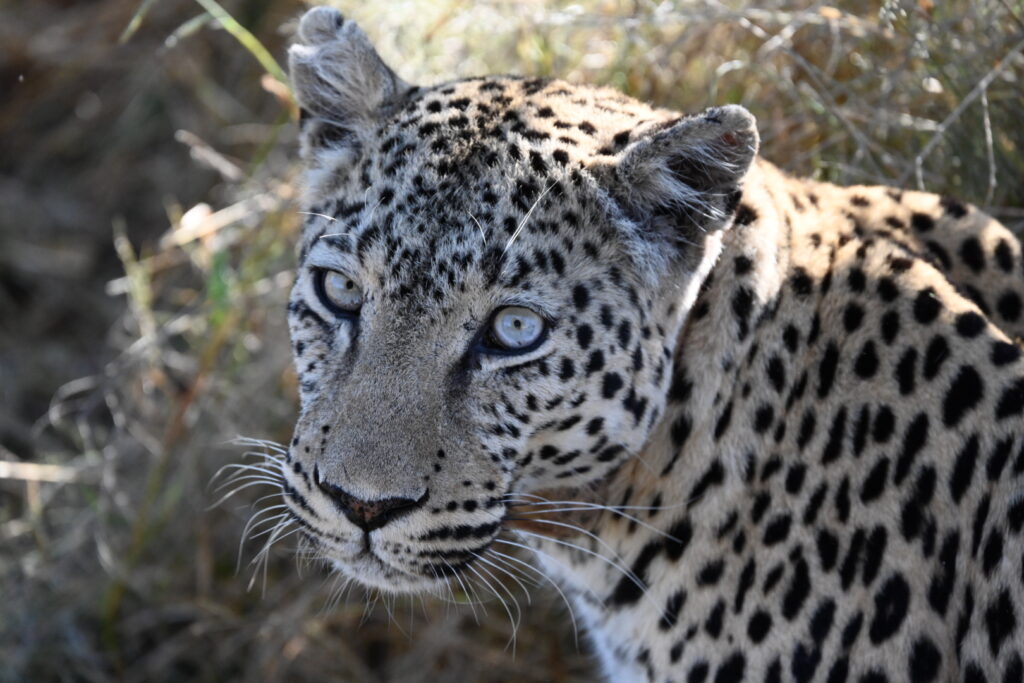
She had a kill in the bush, which is why she was so difficult to find.
My fellow passenger goes to take a picture with the flash on, and I manage a quick: “No flash for leopard” before she takes the shot. Thankfully she listens, and closes up the flash.
Felix documents the details of the kill – the fact that it’s a juvenile kudu, and it’s time and location – as that will be used for research purposes.
And us? We get one last chance to sit with a leopard.


I’m still not sure how I feel about the radio collars. But I will say this – it might make tracking easier, but it is by no means easy.
Saskia disappears into the bush, and it’s time to hit the road:
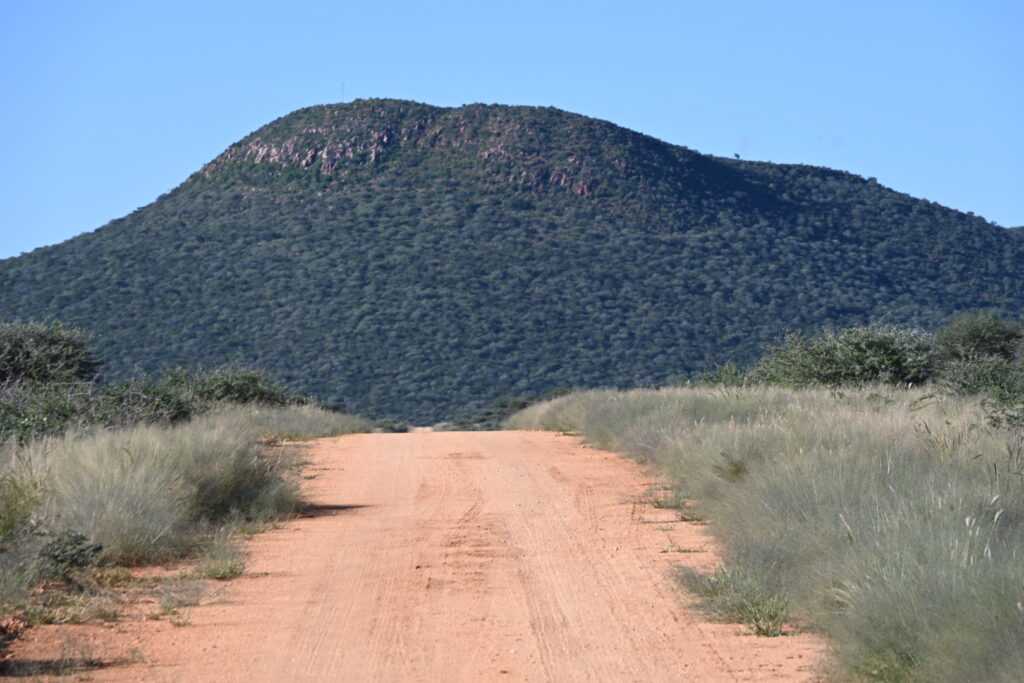
Along the way, we spot a steinbock, the second-smallest antelope:
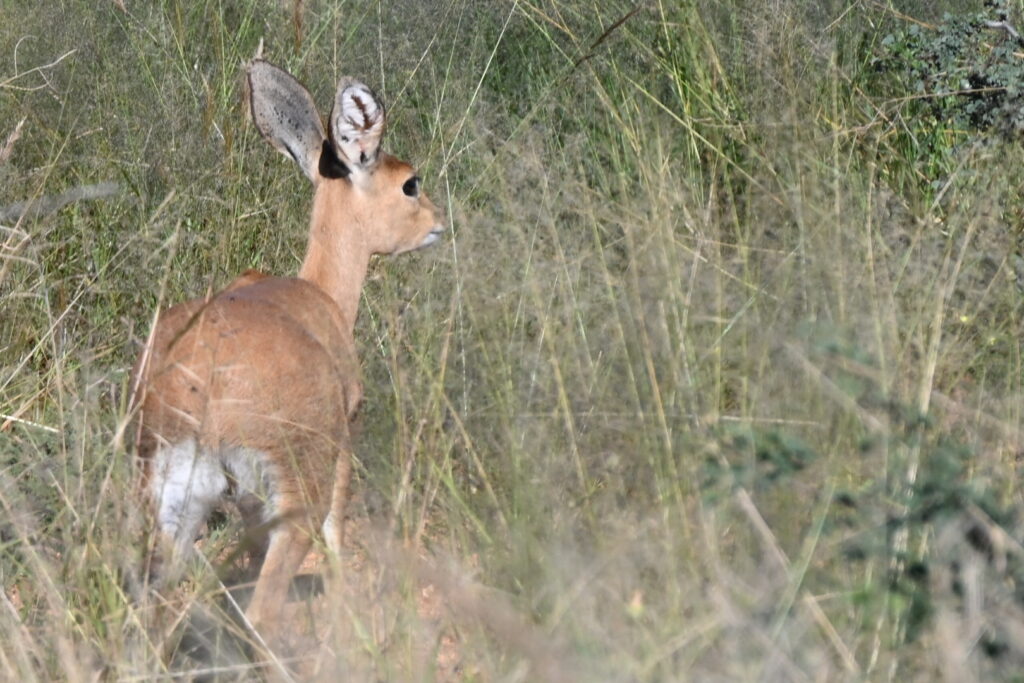
Not a fabulous photo as these guys are quick – but also little and adorable
Then mongooses:
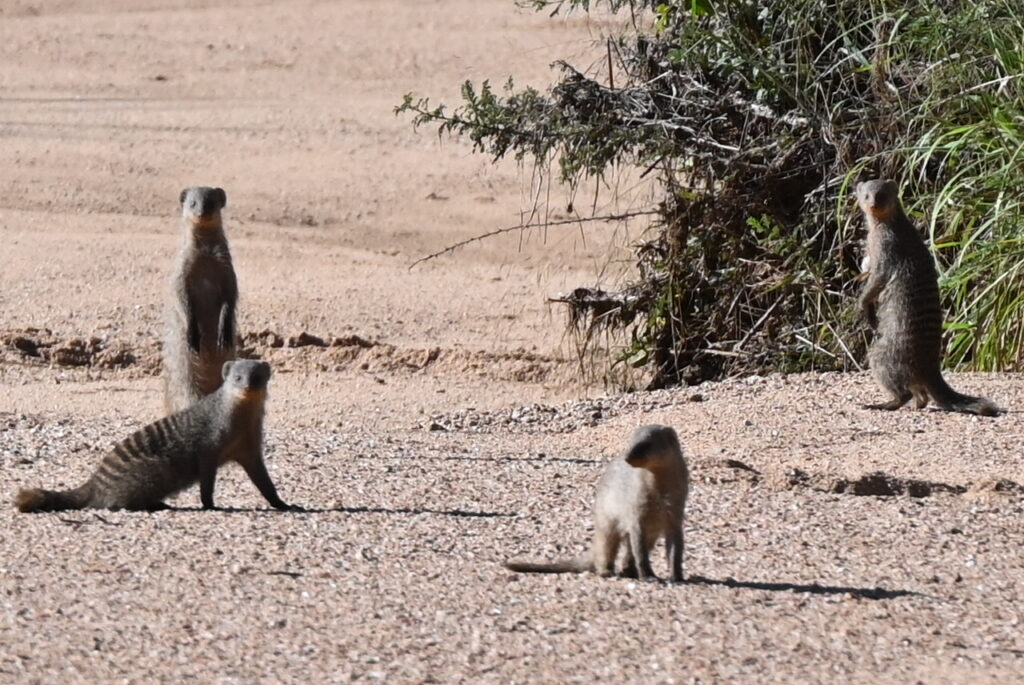
They look like they’re about to drop the hottest album of 2025
And both adolescent and juvenile giraffes:
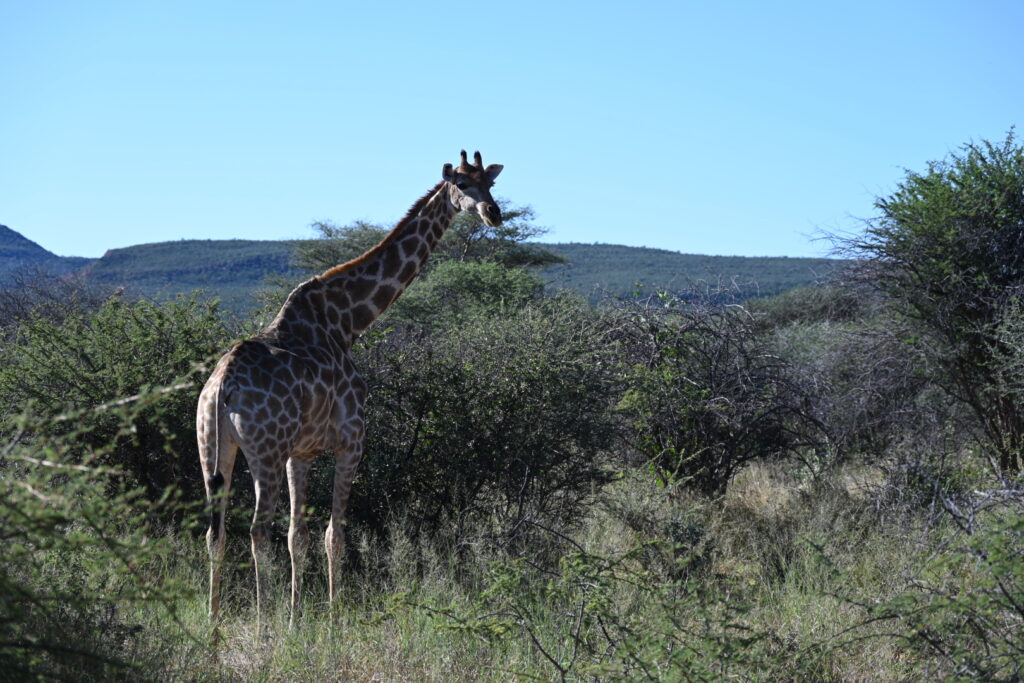

Ever get that feeling that someone is watching you?
Plus one last jackal:

We return to the lodge, where they have a buffet breakfast with eggs to order. Quite tasty – one of the better breakfasts we’ve had while in Namibia:
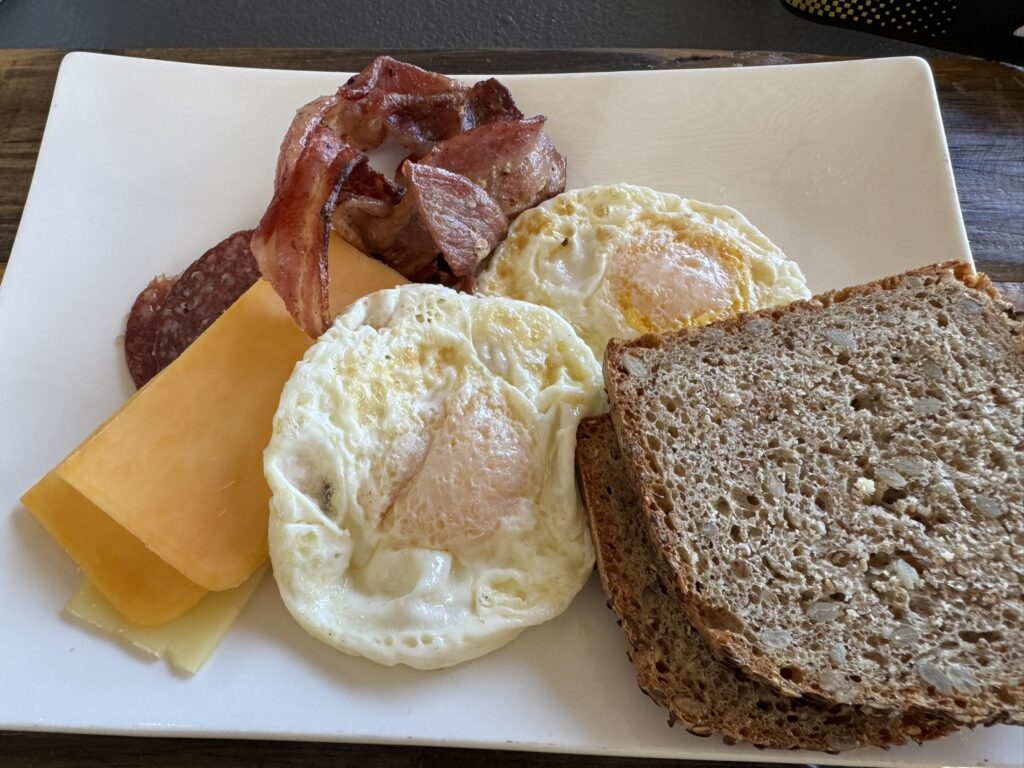
Enjoyed in the stylish comfort of the Okinjima lodge:
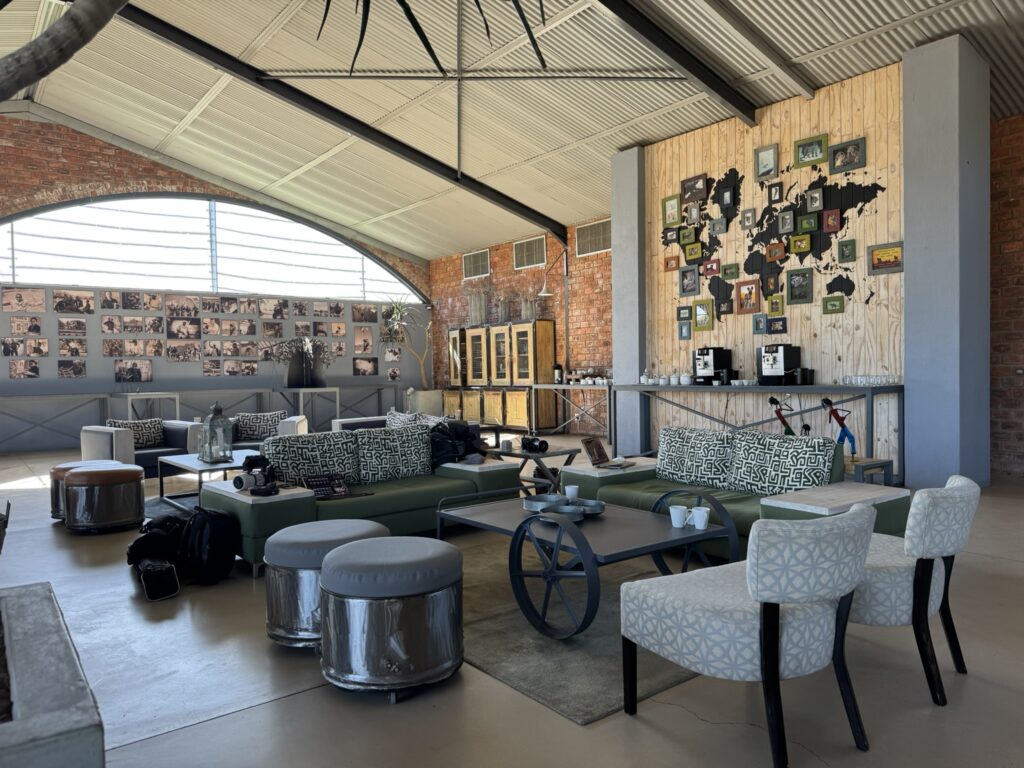
Then it’s once more time to pack up and get on the road.
Would we come back to Okinjima? Probably. The location really helps break up the trip to Etosha, and it’s nice to have the ‘guaranteed’ sightings of both cheetahs and leopards. But I want to do a bit more research into the radio collars and the reserve itself before I give my full endorsement.
Off to Windhoek for our final night in Namibia. But on the way we spot a pair of dik-diks, the smallest antelope:
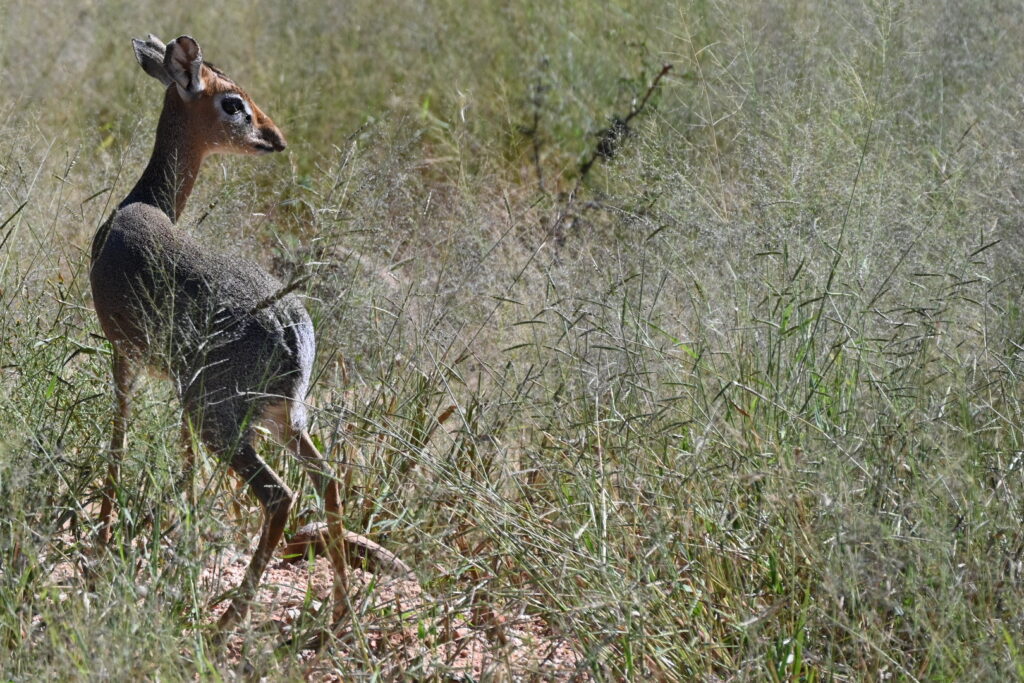
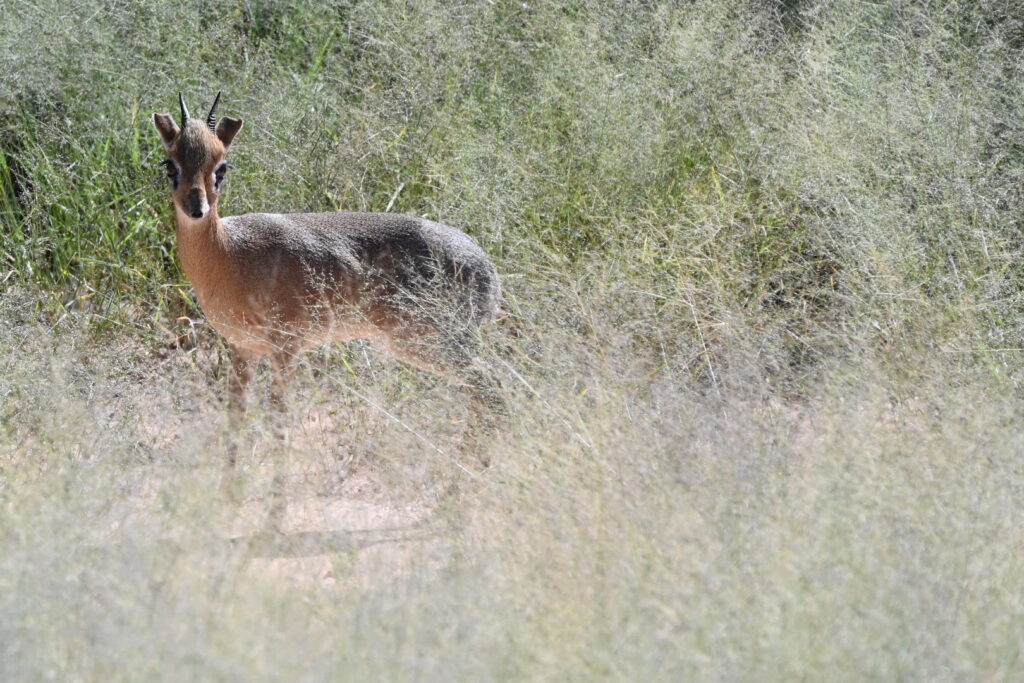
And a white rhino:
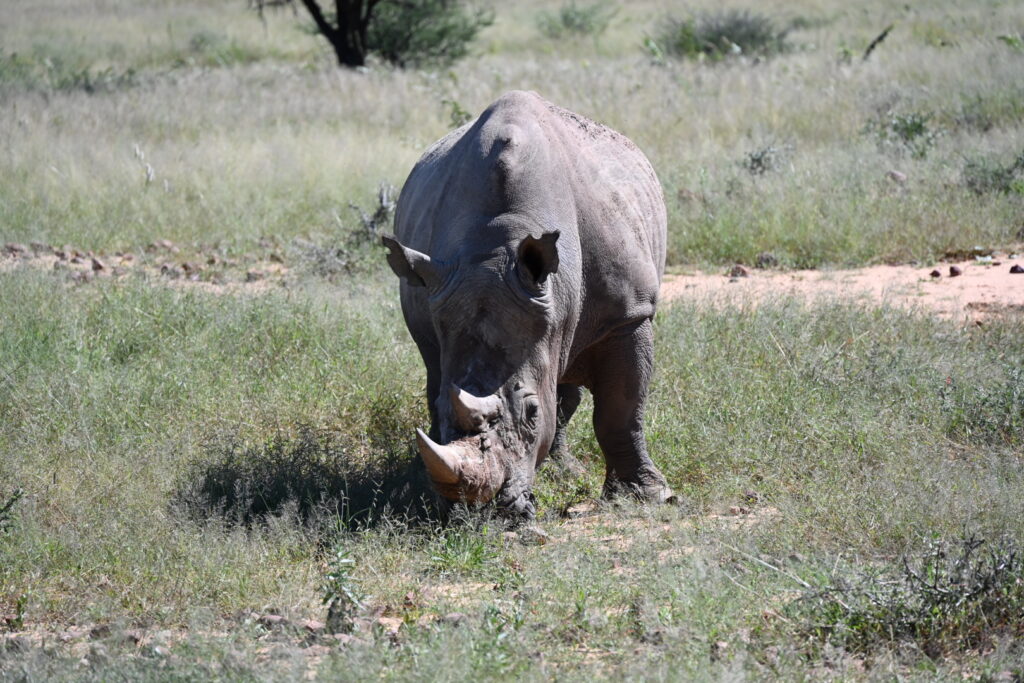
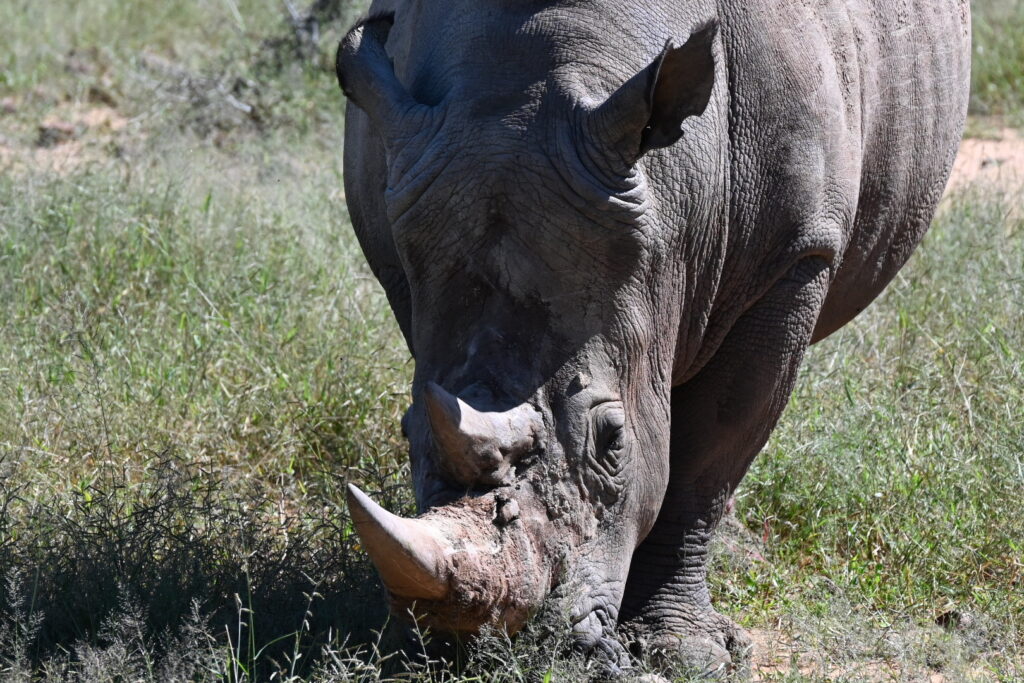
Not bad for a drive to the gate!
The drive to Windhoek takes a little more than three hours. The road out from Okinjima is rough, but then we’re on tarmac the rest of the way. It’s a welcome change.
We return to the Weinberg to find that we’ve been upgraded.
“What kind of upgrade?” I ask suspiciously. We’ve been given ‘upgrades’ in the past that haven’t worked for us, so I immediately start to wonder – are there two bedrooms? Are there two bathrooms? Is it full of monkeys? Do the monkeys have their own bathroom? You know, the usual.
But no – this was a true and proper upgrade:
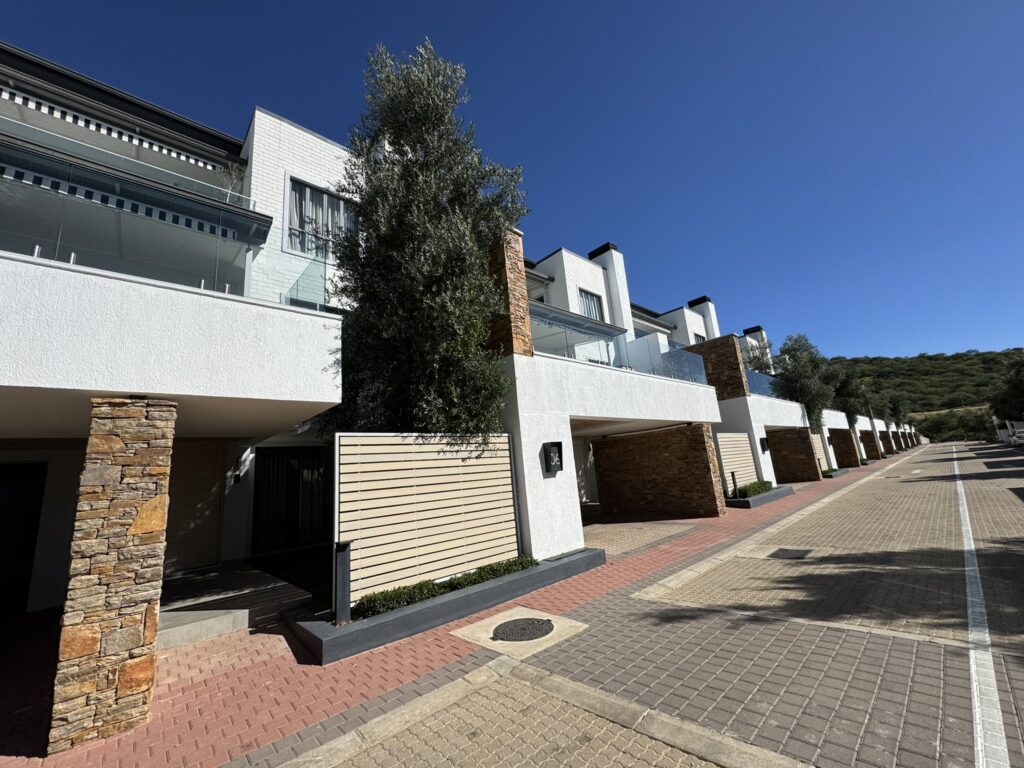

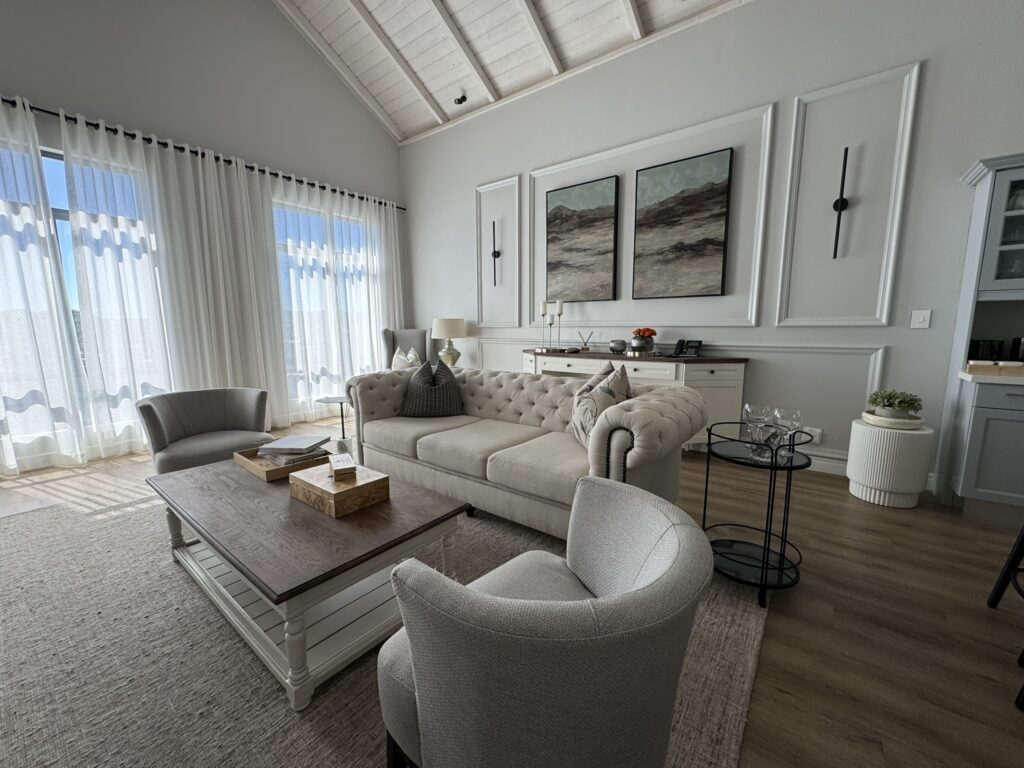
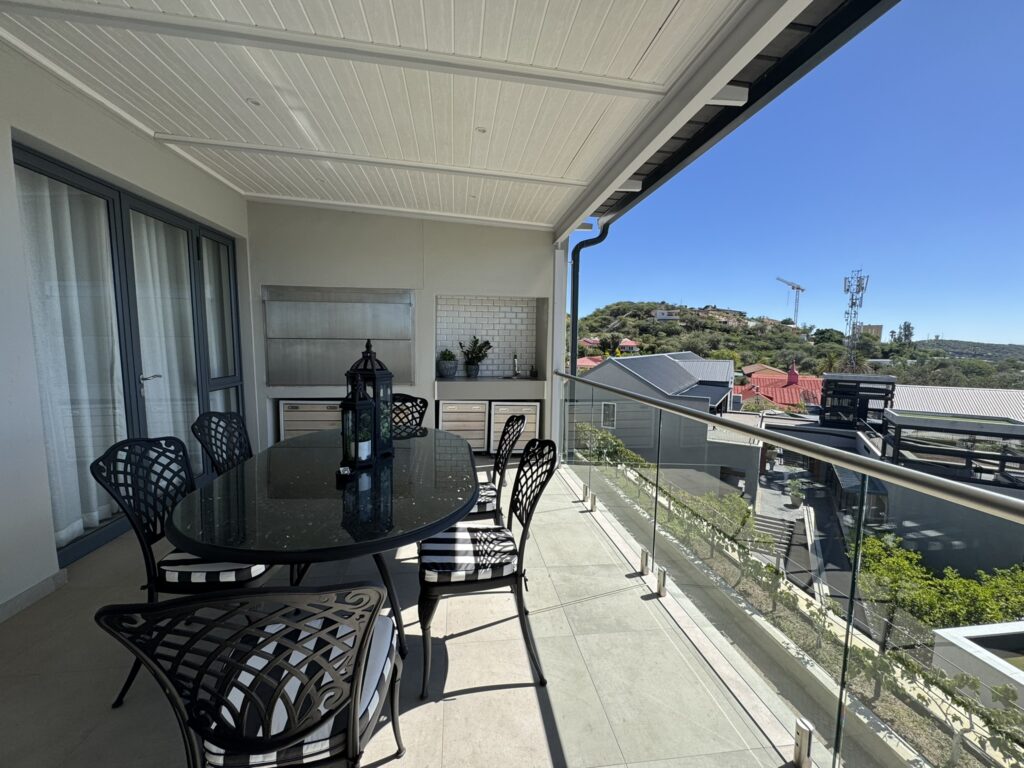
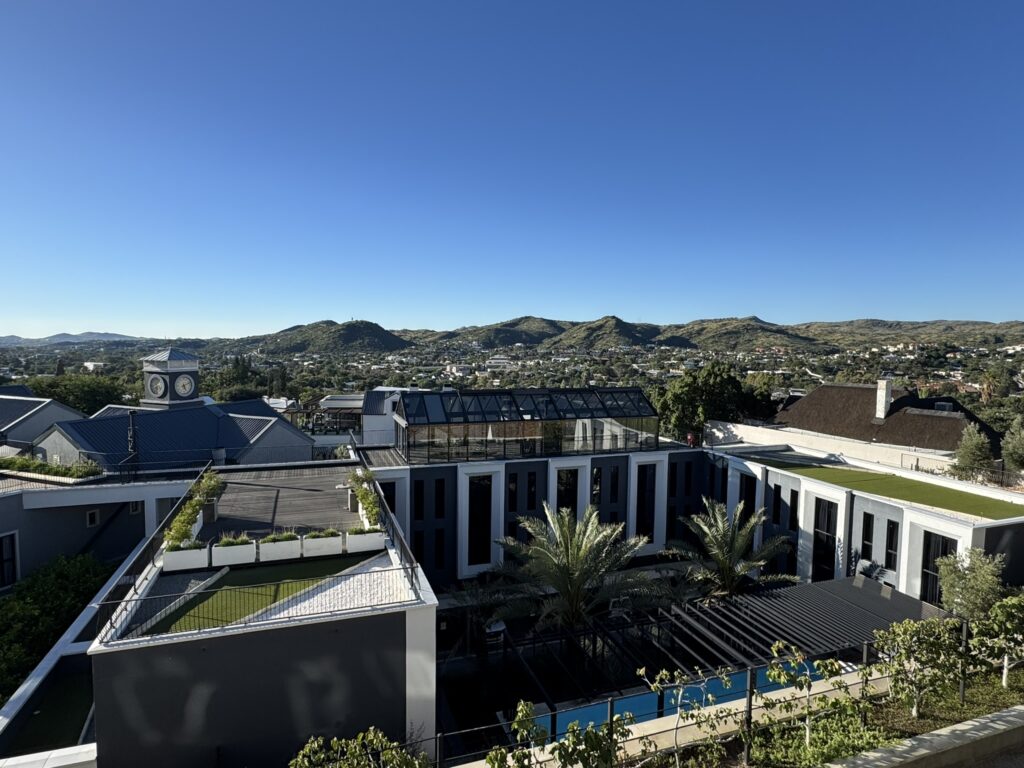
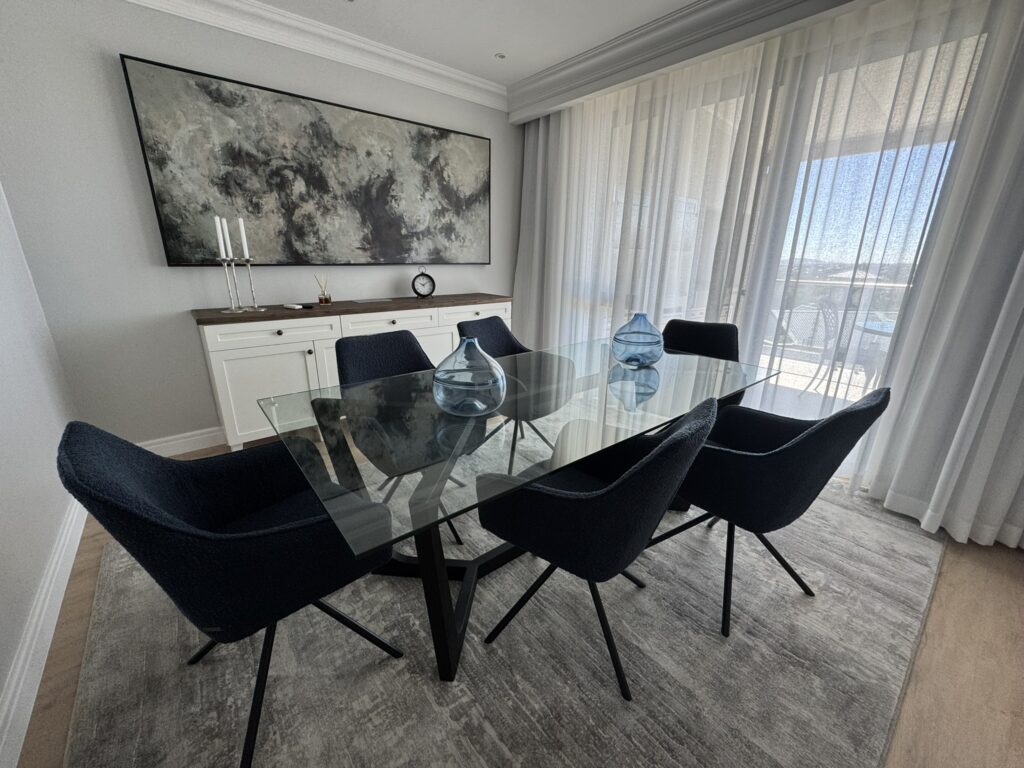
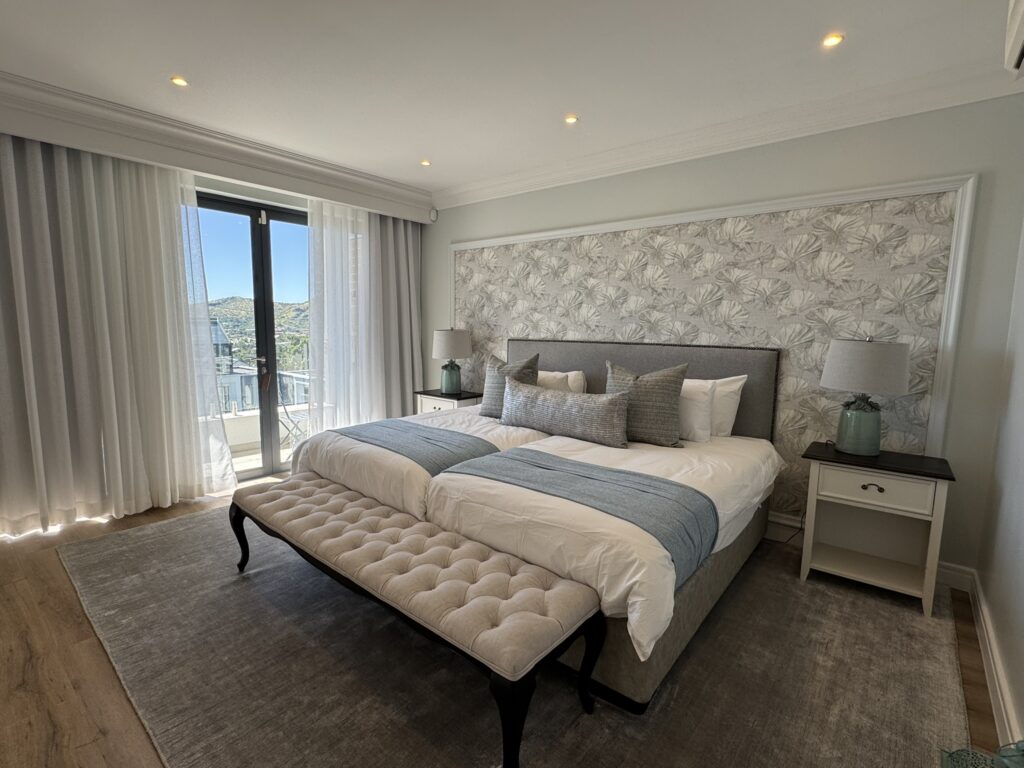
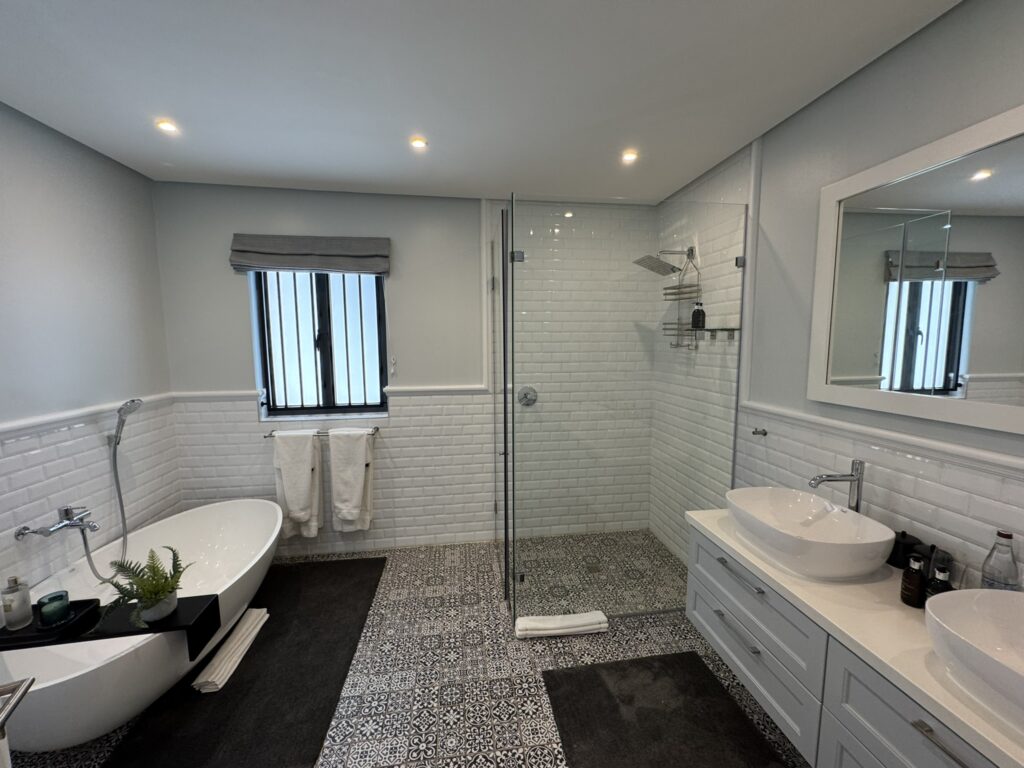
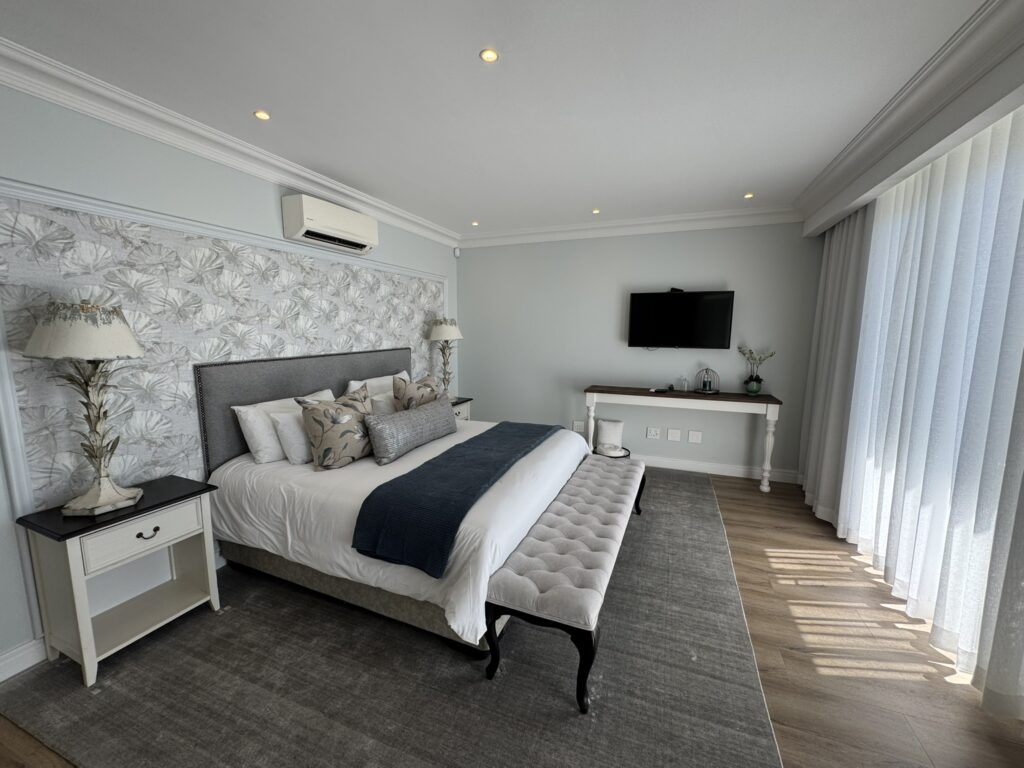
The room is called Terrace 20, and it’s one of the luxury properties adjoining the Weinberg. It seems so new that we may be among the very first guests, and we’re not actually able to find it on the Weinberg’s website. But if you’re looking for a luxury property in Windhoek, I would highly recommend it.
The fridge is well stocked, and everything inside it is included.
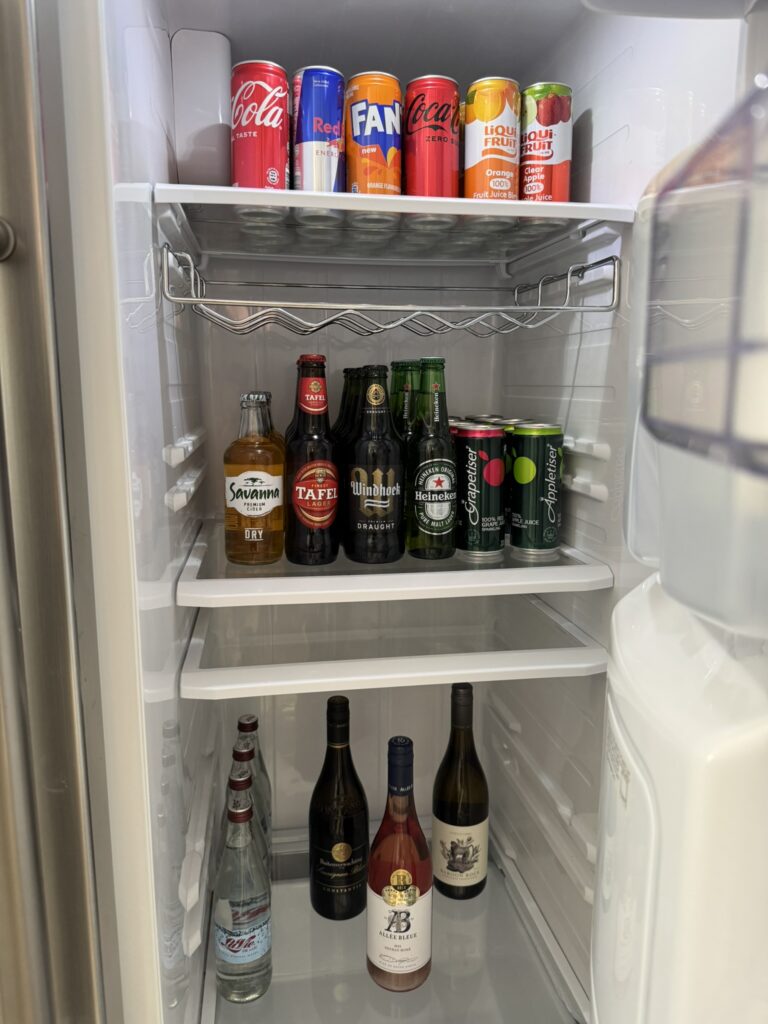
Oh, how we wish we had more than just one last night.
The kids even find a 3rd bedroom that’s listed as playroom / nursery with books and a Nintendo Wii.


They are in heaven.
Eventually we pry them away for lunch:

Just something small – chips and sandwiches – perfect for a light meal before an early dinner.
Plus strawberries daiquiris for the adults:
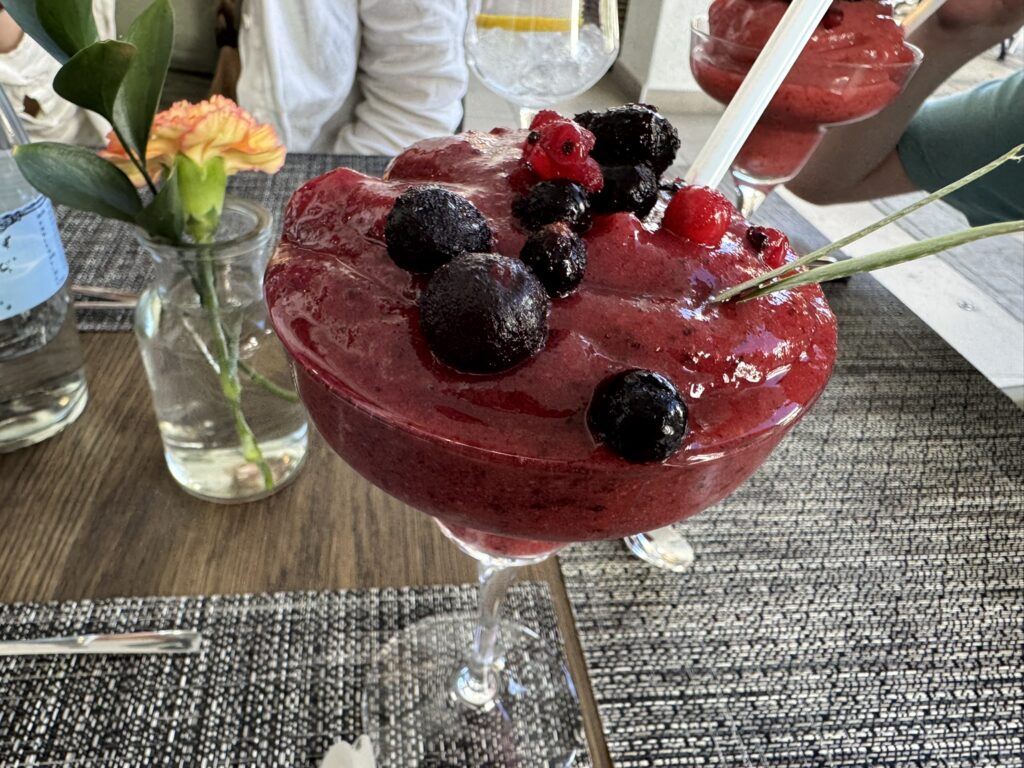
Back to the villa for blogging and homework, and to prepare our luggage for the multiple flights that lie ahead – we’re off to Zimbabwe tomorrow, and then back home via Kenya the day after.
We then gather everyone up for dinner, only to be met with an ear-splitting peal as the villa’s alarm goes off.
We’re not sure what we’ve done or how to turn it off, and we can’t seem to reach the front desk – so eventually we abandon our screeching villa to speak to the manager in person.
Thankfully, it soon shuts off – though it’s unclear whether that’s due to management intervention or the alarm simply getting sick of yelling at us.
Off to dinner at a nearby steakhouse, the Butcher Block:

Photo credit: Butcher Block facebook page – Facebook
All of the tables are marked with ‘reserved’ signs. Oops – should have planned ahead. We explain that we’re going to be quick and they squeeze us in with the understanding that we’ll be gone within an hour. That works for us – we could all use an early bedtime.
My wife, daughter and I each have a steak:
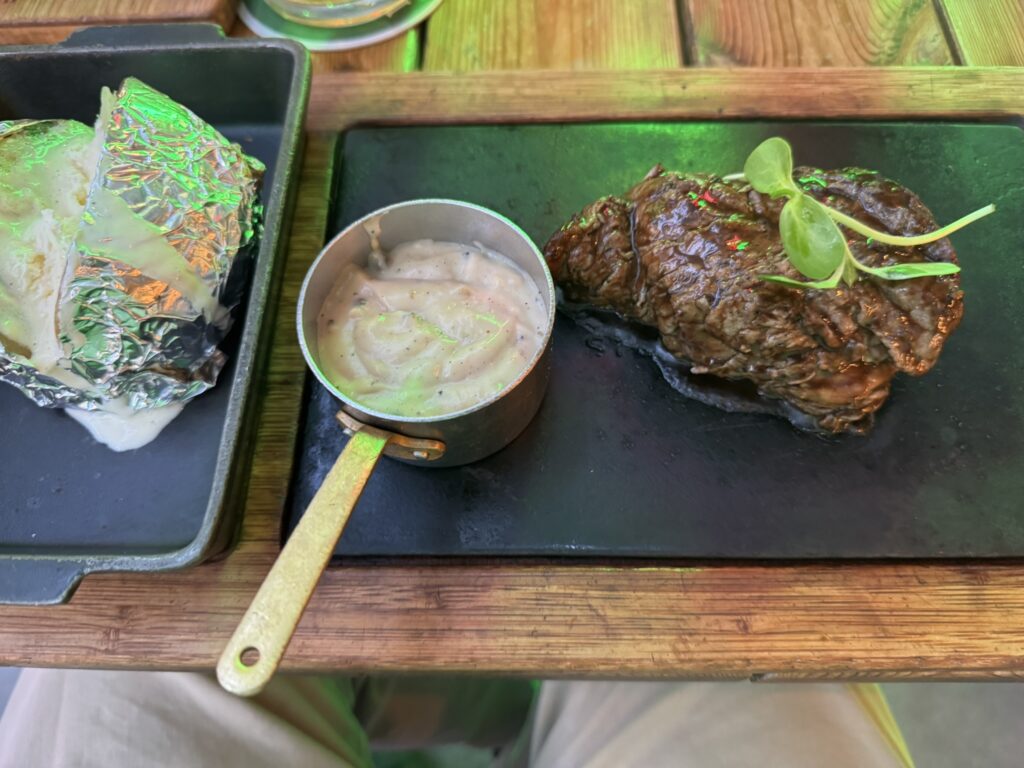
While my son has the burger:

Very, very tasty – the steaks are wet-aged for several weeks, and you can really taste the marinade.
We manage to make time for dessert – my son has the brownie, while my daughter has the deep fried Oreos. (Yes, they are really a thing. Sadly they shall remain unphotographed.)
I snap a few shots of the Windhoek skyline:


And then it’s time for bed.
